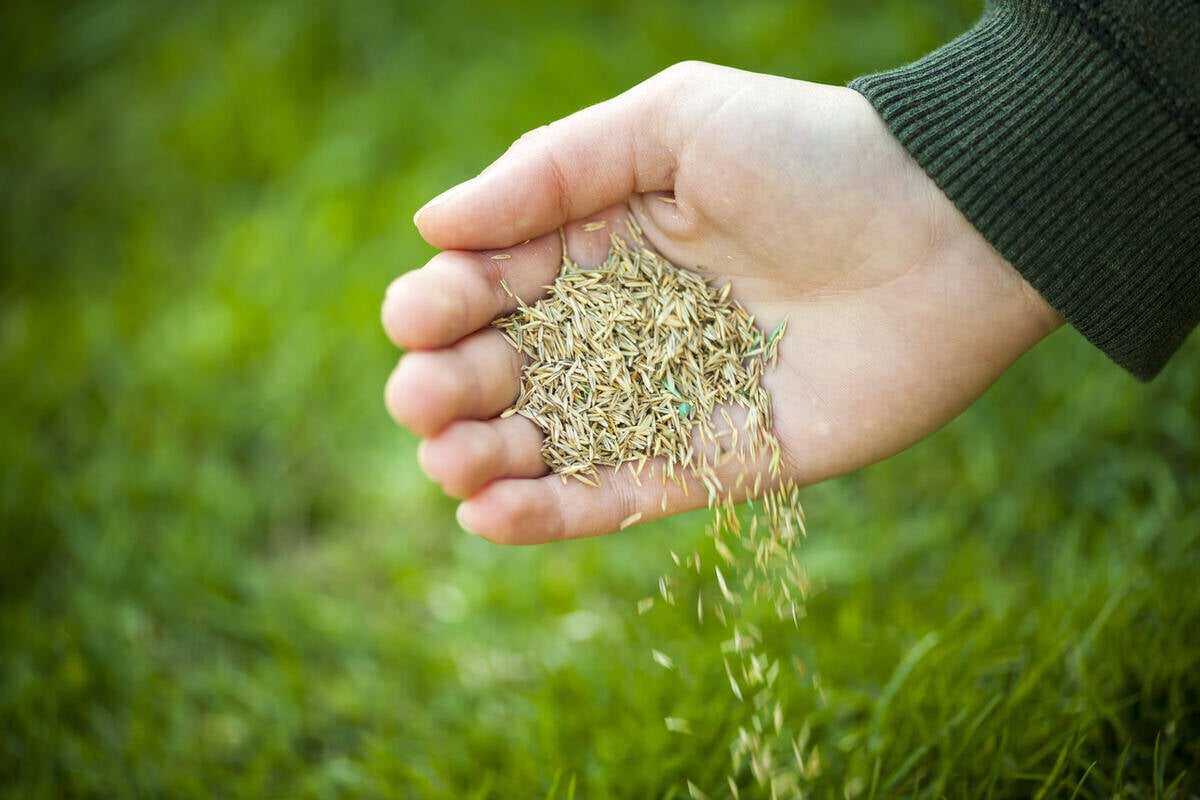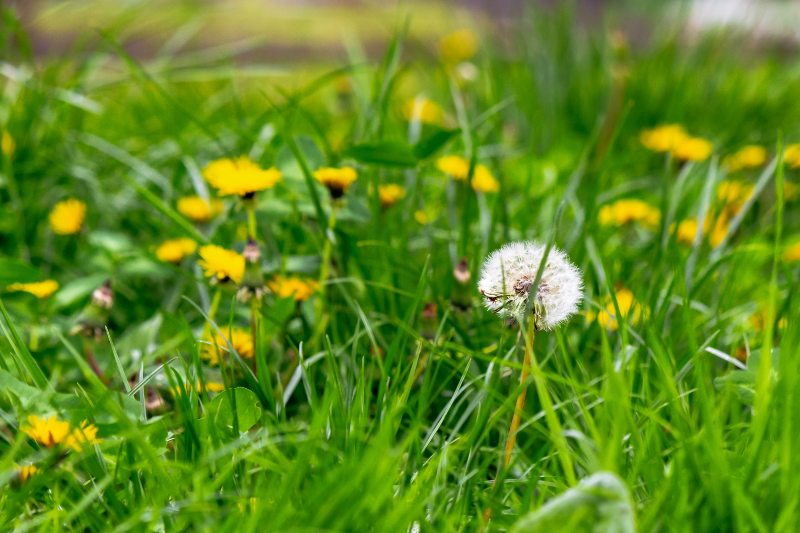
If you are trying to fill in your yard’s bare spots, dormant seeding is a good way to give your northern lawn a head start when spring comes, among other benefits.
When you seed in late fall, this will not only reduce your grass’s watering needs and help your grass outcompete weeds, but it also bolsters the overall health of your lawn and improves its drought tolerance. Let’s explore the benefits of dormant seeding to help you decide if this method is right for you.
Extended Establishment Period
Seeds planted during the cold season have several months to naturally work their way into the cracks of the soil during freeze-thaw cycles. As a result, they’re ready to start growing as soon as spring temps rise, giving your grass seed a head start on seeds planted later during normal spring seeding times.
Also, you won’t have to fit spring overseeding into your busy schedule. Spring can come up fast, so planting grass seed in the fall can ease your mind, since you won’t have to worry about planting new seed in the spring.
See Related:
| Before you dormant seed your lawn, let LawnStarter mow your grass and remove leaves for better seed-to-soil contact. LawnStarter offers mowing services at an average price of $48 per service with an average rating of 4.5/5 from our customers. LawnStarter’s leaf removal services cost an average of $158 per service and earn a 4.3/5 rating. |
Reduced Competition From Weeds

Early-germinating grass seeds not only get a head start on lush spring growth but also get a head start on spring weeds. By giving your grass a chance to outpace weeds that might take over your yard, early germination can create a thick, full lawn that can outcompete weeds and reduce their germination rates by shading the soil.
See Related:
- Guide to Weed Control in Your Yard
- How to Get Rid of Weeds in Grass
- How to Prevent Weeds From Growing in Your Lawn
Lower Water Requirements
When the snow melts, it leaves grass seeds in moist, warming soil — excellent growing conditions for grass. Natural spring rains also increase soil moisture. Between the snow melt and spring rains, your lawn won’t need as much watering compared to spring seeding, saving you time, money, and conserving local water resources.
But this benefit is dependent on local weather. Dormant seeding works best in areas with heavy snowfall, since in the spring, the melting snow provides natural moisture for your soil and grass seeds.
Additionally, yards that experience long dry spells in the spring will require irrigation. If the soil doesn’t stay moist after the snow melts and the weather warms, the grass seeds won’t germinate or will germinate at lower rates.
Increased Drought Tolerance
Compared to spring seeding, dormant seeding gives grass more time for root development and growth before summer stresses. By giving seeds more time to establish, dormant seeding strengthens and improves the health of your new grass.
More root development equips grass to better handle extreme heat and withstand dry spells, particularly during the hot summer months. With a more mature root system, your grass will be able to access more water even during drought.
Improved Soil Structure
Since dormant seeding doesn’t require you to till the soil, it doesn’t disrupt the soil as much as spring seeding, so you’ll be able to keep the soil structure largely intact, reducing erosion.
Reduced Planting Effort
Compared to spring seeding, dormant seeding is low effort. All you have to do is loosen the top half-inch of the soil with a rake before you overseed new cool-season grass seeds on your lawn. Then leave them be. From there, nature will take its course, and the grass will grow on its own once temperatures start to rise.
This will save you from additional preparatory steps required for spring seeding, such as:
- Core aeration
- Dethatching
- Adding new soil
See Related: How to Dormant Seed Your Lawn
Increased Growth in Shady Spots
If there are shady areas in your yard, such as underneath your trees, dormant seeding can help fill in areas where grass has trouble growing.
While deciduous trees are still bare, more light will reach the grass seed, encouraging the dormant seeds to germinate immediately after temperatures warm, before trees have a chance to put out new leaf growth.
Dormant seeding with shade-tolerant grass types, such as a fine fescue mix, will also help increase growth in shady spots.
FAQ About the Benefits of Dormant Seeding
Dormant seeding won’t work well in yards with high winter foot traffic, although deep or icy snow can act as a blanket that protects the seeds from being dispersed. But without snow cover to protect the seeds, foot traffic may scatter the seeds or cause compacted soil.
Cool-season grasses are the best turfgrass types for dormant seeding. Some of the best grass types for winter overseeding include:
• Fine fescue
• Tall fescue
• Perennial ryegrass
• Kentucky bluegrass
Give Your Lawn a Head Start This Winter

Ready to kickstart your lawn’s growth come spring with dormant seeding? Seed in late fall to save yourself the trouble of watering and prepping the soil. And once your grass grows in, save yourself the trouble of dealing with mowing and lawn care chores when you hire a LawnStarter pro.
Read More: Frost Seeding vs. Dormant Seeding: What’s the Difference?
Main Image: Dormant seeding has many benefits. Image Credit: Shutterstock